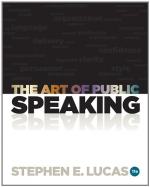“That man is a cynic. He sees goodness nowhere. He sneers at virtue, sneers at love; to him the maiden plighting her troth is an artful schemer, and he sees even in the mother’s kiss nothing but an empty conventionality.”
Write, commit and deliver two similar passages based on your choice from this list: (a) “the egotist;” (b) “the sensualist;” (c) “the hypocrite;” (d) “the timid man;” (e) “the joker;” (f) “the flirt;” (g) “the ungrateful woman;” (h) “the mournful man.” In both cases use the principle of “Reference to Experience.”
20. Write a passage on any of the foregoing characters in imitation of the style of Shakespeare’s characterization of Sir John Falstaff, page 227.
FOOTNOTES:
[Footnote 12: Argumentation will be outlined fully in subsequent chapter.]
[Footnote 13: The Working Principles of Rhetoric, J.F. Genung.]
[Footnote 14: How to Attract and Hold an Audience, J. Berg Esenwein.]
[Footnote 15: On the various types of definition see any college manual of Rhetoric.]
[Footnote 16: Quoted in The Working Principles of Rhetoric, J.F. Genung.]
[Footnote 16A: Quoted in The Working Principles of Rhetoric, J.F. Genung.]
[Footnote 17: G.C.V. Holmes, quoted in Specimens of Exposition, H. Lamont.]
[Footnote 18: Effective Speaking, Arthur Edward Phillips. This work covers the preparation of public speech in a very helpful way.]
CHAPTER XX
INFLUENCING BY DESCRIPTION
The groves of Eden vanish’d
now so long,
Live in description, and look
green in song.
—ALEXANDER POPE, Windsor Forest.
The moment our discourse rises above the ground-line of familiar facts, and is inflamed with passion or exalted thought, it clothes itself in images. A man conversing in earnest, if he watch his intellectual processes, will find that always a material image, more or less luminous, arises in his mind, contemporaneous with every thought, which furnishes the vestment of the thought.... This imagery is spontaneous. It is the blending of experience with the present action of the mind. It is proper creation.
—RALPH WALDO EMERSON, Nature.
Like other valuable resources in public speaking, description loses its power when carried to an extreme. Over-ornamentation makes the subject ridiculous. A dust-cloth is a very useful thing, but why embroider it? Whether description shall be restrained within its proper and important limits, or be encouraged to run riot, is the personal choice that comes before every speaker, for man’s earliest literary tendency is to depict.
The Nature of Description




